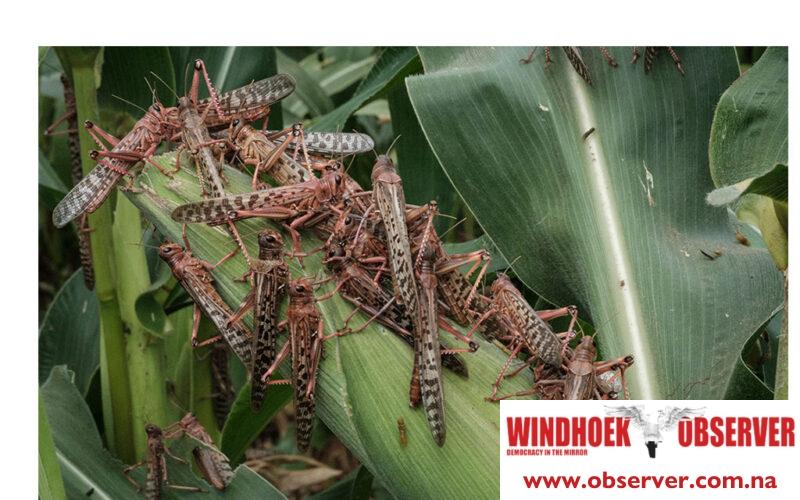Allexer Namundjembo
Farmers in the northern parts of the country facing outbreaks of destructive insects like locusts and armoured crickets could benefit by using these insects as animal feed.
Hiskia Asino, a doctorate candidate in aquaculture and nutrition at the University of Namibia (Unam), proposed turning pests such as locusts, armyworms, and armoured crickets into protein-rich feed for poultry, pigs, and fish.
His idea aims to reduce crop damage and lower feed costs.
“Instead of viewing these pests only as a threat, we should begin to see them as a resource. Locusts, for example, are high in protein and can be harvested, dried, and ground into a powder ideal for fish, poultry, and pig feed,” Asino said.
The 2024/2025 rainy season brought widespread rainfall, offering relief to drought-stricken communities. However, the improved conditions led to a rise in pest populations.
Approximately two weeks ago, the Ministry of Agriculture, Fisheries, Water and Land Reform confirmed a locust outbreak in the northeastern Zambezi region.
Earlier this month, the Cabinet directed the ministry to start community awareness campaigns about pest outbreaks and control measures.
This decision was prompted by concerns that locust outbreaks in the Southern African Development Community (SADC) region could spread to Namibia.
“As a country, we spend millions of dollars on pesticides and food relief every time these outbreaks occur,” Asino said.
He pointed out that this method is costly and harmful to the environment. He emphasised the need for a long-term solution that could turn challenges into opportunities.
Countries like Kenya, Pakistan, and China have shown that using insects as animal feed can work.
In these countries, insects are harvested during outbreaks, processed into powder, and blended with other ingredients to create balanced animal diets.
In Kenya, locusts are harvested during outbreaks and processed into protein-rich feed for poultry and fish with support from institutions like the International Centre of Insect Physiology and Ecology.
Asino believes Namibia could adopt a similar approach.
“With feed costs making up 50 to 70% of production expenses for many farmers, especially in poultry and aquaculture, using insect protein could significantly reduce overheads,” he said.
He also stressed the importance of involving communities.
“This isn’t just about feed. Harvesting pests could provide a source of income for rural communities while reducing the damage to crops,” Asino said.
He says research into the nutritional value of local insects would be key.
“We need to understand the composition of these insects and the amount of protein, fat, and fibre they contain so we can develop safe and effective feed formulations,” he said.
“As we face ongoing climate challenges, we must explore every opportunity to build resilience and improve food security. Turning pests into feed is not only practical; it’s a step toward sustainable agriculture,” he said.
Northern-based crop farmer Ester Mwele said she had similar ideas for some time.
During the 2021 locust outbreak, she collected locusts to feed her chickens.
“I collected some during the outbreak. I used them to feed my chickens, and it was very productive. I spared my Mahangu, which I used to feed the chickens,” Mwele said.
She added that some people in her village suggested that locusts could be eaten.
“Not so sure, but there were rumours that some people collected locusts for consumption,” she said.
In 2021, Oswald Mwanyangapo, the acting director of agricultural production, extension, and engineering services in the agriculture ministry, warned communities against eating locusts that had been sprayed with pesticides because of possible health risks.
Selma Matheus, a resident of Oshigambo in the Oshikoto Region, said locusts have long been consumed and are delicious.
“If it weren’t for the pesticides that we are being cautioned against, we would be freely feasting on the locusts now,” she said.




